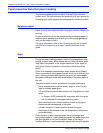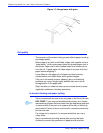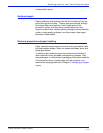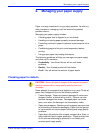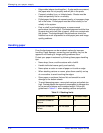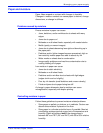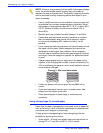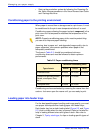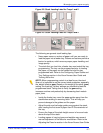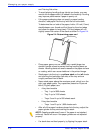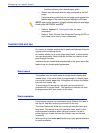
Xerox Nuvera Paper Guide
2-3
Managing your paper supply
Paper and moisture
Paper fibers expand or contract with changes in humidity.
Changes in moisture content can cause paper to deform, change
dimensions, or change in stiffness.
Problems caused by moisture
Excess moisture in paper can cause:
• Jams, deletions, and/or wrinkles due to sheets with wavy
edges
• Jams due to paper curl
• Misfeeds or multi-sheet feeds, especially with coated stocks
• Mottle (spotty or uneven images)
• Jams due to sheets becoming less rigid and bunching up in
the paper path
• Deletions and/or lighter images because excessively high or
low resistivity makes paper less able to attract dry ink
• Water marks on sheets due to condensation
• Image quality problems and machine contamination due to
coating rubbing off of paper
Low moisture in paper can cause:
• Jams due to static electricity
• Misfeeds or multi-sheet feeds
• Deletions and/or wrinkles due to sheets with tight edges
(edges shrink and curl slightly)
• Poor dry ink transfer (small deletions and uneven density)
• Folds and jams due to paper being too stiff
A change in paper dimension due to moisture can cause
misregistration, especially with duplex printing.
Controlling moisture in paper
Follow these guidelines to prevent moisture-related problems:
• Store paper on pallets, on shelves, or in cabinets. Cartons can
absorb extra moisture if placed on the floor.
• Store paper in a climate controlled room, if possible. Most air
conditioning systems provide a good mix of temperature and
humidity. Paper will perform best if the storage area is
between 68° and 76°F (20° and 24°C) with 35 to 55% relative
humidity.




